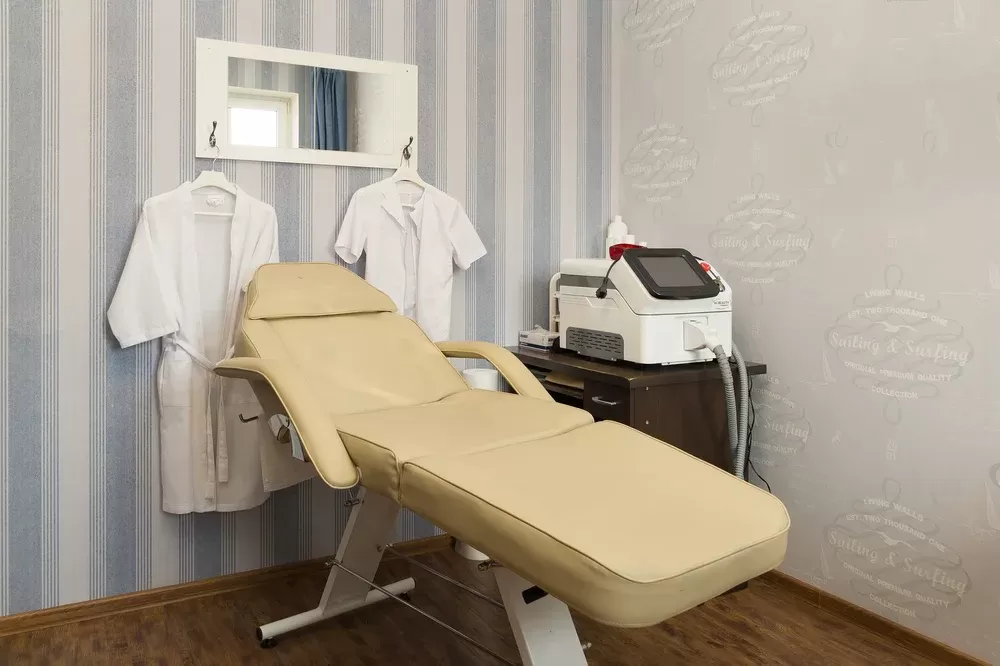What is the best shock wave therapy for plantar fasciitis?
- Radial
- Focused vs radial shockwave therapy
- What is the London Foot Pain Clinic's position?
- One final thing to note
Shock wave therapy is a non-invasive treatment that may be helpful in place of surgical or steroid-based procedures. Extracorporeal Shock Wave Therapy typically comes in two forms: Focused ESWT & Radial ESWT.
The shock waves penetrate the tissue and stimulate 'healing' reactions. They are an excellent option for treating painful injuries that are difficult to treat without surgery or injections. It is excellent for plantar fasciitis but is also known to help with many sports-related injuries like repetitive strain injury and tennis elbow or hamstring issues.
What are the two varieties of ESWT?
Focused
Focused extracorporeal shock wave therapy is generally less painful as the applicator has little effect on the skin and underlying soft tissues and is more targeted than the alternative. It can penetrate more profoundly than the radial variety, but it typically costs more to have it done. Focused waves are produced through a cone of crystals, focusing the energy field wherever an electric current is applied.
This treatment's 'focused' aspect makes it popular, zeroing in on specific areas, even if they are pretty deep within the body.

Radial
With radial shockwave therapy, there are three components of the process:
- Ultrasonic pulses
- Acoustic audio pulses
- Slow shear waves
All three are most potent at the source, meaning the tip of the applicator. This means they are less effective for injuries more profound within the tissue. The kinetic energy it transmits is pushed outwards throughout the skin as a 'radial wave', affecting the treatment area. The lack of depth limits some things, but it works well for skin or close-to-skin conditions.
With radial ESWT, you will likely experience more discomfort from the treatment. The technology is older and can be less efficient since patients can't usually handle higher doses.
ESWT for plantar fasciitis
There is no doubt about the effectiveness of shock wave therapy for plantar fasciitis. The therapy is worth considering if you are suffering from the condition and want to avoid steroid injections and/or surgery.
The 'extracorporeal' part of the treatment's name demonstrates that it is entirely separate from the electrical shockwave therapy used on patients with mental health conditions in the 1950s. This cutting-edge therapy uses acoustic waves, and studies (1) demonstrate its effectiveness in relieving the pain associated with plantar fasciitis.
Another study (2) from the Nature Journal used ultrasound and elastic scan technology to examine how ESWT stimulation affects the collagen in the tissues following treatment. It found that the intensity of heel pain and the PF thickness reduced gradually over 12 months following ESWT treatment. It also helped remodel the changes in collagen for the 12 months post-treatment - something we call the carry-over effect.
And if you want further evidence, a placebo-controlled double-blind study (3) noted substantial improvements and raised an important question. There was no doubt that ESWT proved its effectiveness compared to the placebo. However, in its study of short- and medium-term effectiveness, there was confusion surrounding the parameters for administering the shockwaves.
This is where the question of comparing focused shockwaves and radial shockwaves comes in and the intensity of the shockwaves being administered. In conclusion, the recommendation called for more randomised trials making specific comparisons between different types and intensities of shockwaves. This would produce more precise information on how effective these therapies are for plantar fasciitis sufferers.

Focused vs radial shockwave therapy
As previously noted, one of the critical advantages of focused ESWT, as opposed to the radial variety, is the depth and localisation of the treatment. Greater depth penetration helps affect deep issues in the tendons, muscles or bones. This may help treat plantar fasciitis since it occurs within the heel.
- The maximum intensity of radial waves is generally lower.
- The wave is divergent, providing relief over a wider area but less penetration.
- The maximum intensity of the waves is only felt at a superficial depth of around 3-4cm.
As you might guess, the attributes of radial shockwave therapy do not discount it as a treatment for plantar fasciitis. This is why it is still offered as a treatment, and patients often experience positive results when they use it.
But you may find that the attributes of focused shockwaves make it a better option. The penetration can be more adjustable to target areas more profound within the body. The maximum intensity is higher, and patients can tolerate a higher dose since it does not cause the same level of discomfort on the skin.
Of course, the cost is one consideration for patients, and the older radial therapy technology is generally cheaper.
Is the evidence for shockwave therapy helping with plantar fasciitis reliable?
There is a wealth of reliable evidence for the benefits of shockwave therapy in treating conditions in the feet and elsewhere in the body. However, practitioners have not agreed on how the therapy should be standardised. Two patients receiving this therapy at two different clinics may not receive precisely the same treatment.
Different providers decide on their protocols for delivering ESWT. This means you should take time to ensure the clinic you go with has a good track record of success in treating plantar fasciitis with ESWT. The studies indicate that a higher dosage is necessary to experience results for plantar fasciitis with ESWT. While this can be done with radial therapy, the focused variety will likely have a greater chance of meeting the standards indicated by existing studies.

What is the London Foot Pain Clinic's position?
At the London Foot Pain Clinic, we offer both varieties of ESWT, so you can choose the one you want. We have produced this article to give some guidance on which you might want to choose, and you can consult your practitioner at our clinic to get more guidance on how you might achieve the best clinical results.
From our own anecdotal experience, based purely on trial and error over the last 12 months, we have observed higher patient satisfaction from the focused shockwave therapy. This is particularly true with very hard or calcific plantar fasciitis. Patients seem to have a higher tolerance level for the treatment, enabling us to attach the label 'painless' to the focused shockwave treatment. This is because, in comparison to radial shockwaves, there is less skin drumming and sensitivity.
We follow the lead of multiple studies for plantar fasciitis and aim for a low-medium intensity of the focused wave for remodelling. Having said that, we will sometimes switch to a higher intensity to help numb the region.
If you are suffering from pain relating to plantar fasciitis, we recommend our in-depth consultation as a starting point for treatment. This enables us to explore the stage at which the spetum of thickening the fascia is. With this as a foundation, we can offer advice on which type of therapy may yield the best results from a place of knowledge about the specifics of your condition.
If cost is a severe factor for you, this will allow us to ensure you are getting the maximum return on your investment. If you already had some scans like X-rays or an MRI, these can help us explore. If these scans show things like calcification, heel spurs, or thickening that is more than the norm, we would likely lead more towards focused shockwave therapy.

One final thing to note
We firmly believe that both types of shockwave can be effective for dealing with plantar fasciitis. It comes down to the question of which is right for you. Another study (4) concluded that both types of shockwaves are adequate for treating this type of issue. However, the comfort aspect of the focused variety is essential as it is more conducive to delivering a higher dose, meaning more treatment pulses to the affected area.
Ultimately, every patient is different, and many variables are at play. It could be that you will get all the benefits you require from radial therapy, or it might turn out that focused extracorporeal shockwave therapy is a better option for you. When you come to the London Foot Pain Clinic, we will take time to understand your circumstances and the specifics of your condition before recommending you.
It is a big decision to seek extracorporeal shockwave therapy, and it certainly isn't something that should be taken lightly. Get in touch and tell us about your experience so far, and we will arrange a consultation at our clinic in Wimbledon to start digging into the details and find the right course of treatment for you.
Sources: